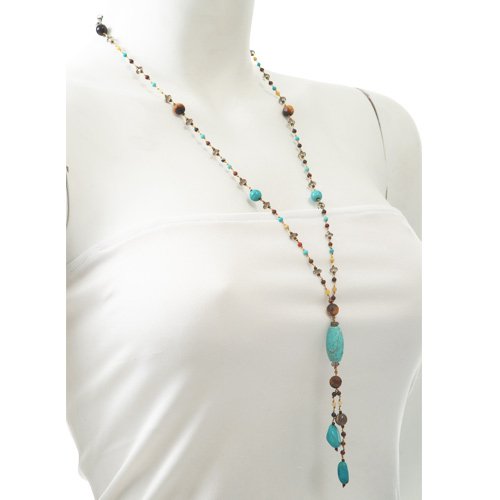Turquoise is the birthstone of December and also it is traditionally thought about the anniversary gemstone for the 11th year of marriage.
Chemically, a hydrated phosphate of copper and aluminum, turquoise is formed when meteoric material or groundwater percolates straight through aluminous rock in the presence of copper. For this reason, it is often related with copper deposits as a secondary mineral, most often in copper deposits in arid, semiarid, or desert environments. It consists of a phosphate of aluminum, colored by copper and traces of iron. Some gemologists believe that the gorgeous blue color is produced by a complex ion formed by copper and ammonium. The finest colored material is mined and worked in Iran; its colors range from the very desirable sky blue to a bluish green.
Turquoise
History
Turquoise, also known as the robin's egg blue gemstone worn by Pharaohs and Aztec Kings, is probably one of the oldest gemstones known. Its blue color is so distinctive that the name is used to divulge any color that resembles it. That is why it is used as a gemstone.
Since about 200 B.C., Turquoise has been extensively used by both southwestern U.S Native Americans and by many of the Indian tribes in Mexico. The Native American Jewelry or "Indian style" jewelry with turquoise mounted in or with silver is relatively new. Some believe this style of jewelry was unknown prior to about 1880, when a white trader persuaded a Navajo craftsman to make turquoise and silver jewelry using coin silver. Prior to this time, the Native Americans had made solid turquoise beads, carvings, and inlaid mosaics.
Today, turquoise has found wide acceptance among population of all walks of life and from many different ethnic groups. The name turquoise may have come from the word Turquie, French for Turkey, because of the early reliance that the mineral came from that country (the turquoise most likely came from the Alimersai Mountain region in Persia, now Iran or the Sinai Peninsula in Egypt, two of the world's oldest known turquoise mining areas.). Another possibility could be the name came from the French record of the gemstone, "pierre turquin" meaning dark blue stone.
For thousands of years the finest intense blue turquoise in the world was found in Persia, and the term "Persian Turquoise" became synonymous with the finest quality. This changed while the late 1800's and early 1900's when contemporary miners discovered or rediscovered essential deposits of high-quality turquoise in the western and Southwestern United States. Material from many of these deposits was just as fine as the finest "Persian. "Today, the term "Persian Turquoise" is more often a definition of ability than a statement of origin, and the majority of the world's finest-quality turquoise comes from the United States, the largest producer of turquoise.
Turquoise Jewelry
Turquoise jewelry is high in fashion now for its natural colors and elegance. It's also very collectible and grows in value over time. One can find a brilliant choice of Turquoise jewelry in both customary and contemporary styles to match every taste. There is everything Turquoise Concho Belts, Turquoise Earrings, Turquoise Bracelets, Turquoise Rings, Hair Jewelry, Turquoise Necklaces, Turquoise Watches, including Turquoise Belt Buckles and Bolo Ties. You can't go wrong with a one of a kind hand made piece of Turquoise jewelry.
What Is Turquoise?
Tags : The Bests Rings






